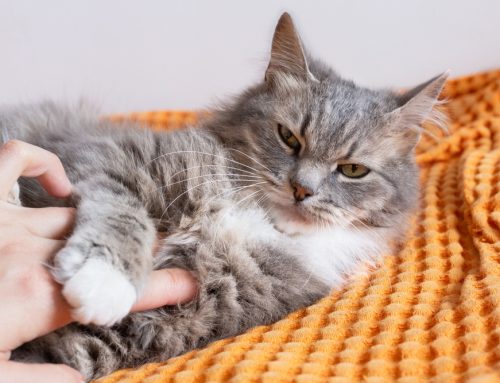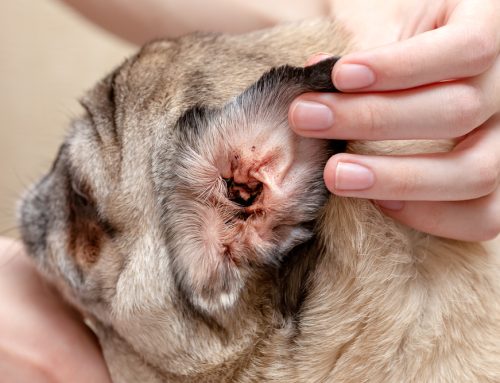You left your pet’s annual wellness visit a bit shocked after learning that your furry pal is more fat than fluff. Fido has obviously been packing on the pounds without you realizing, because their body condition score (BCS) is now eight out of nine. But don’t worry—you’re not alone. In fact, more than half the pets in the United States are overweight or obese, and many pet owners do not realize that their cats and dogs could lose a few pounds to gain numerous health benefits. Overweight pets are at an increased risk for diabetes, heart disease, respiratory disorders, organ dysfunction, osteoarthritis, and some cancers. Overall, overweight or obese pets have a shorter lifespan than their lean counterparts. Countryside Veterinary Hospital will teach you how to determine if your pet is too heavy, and how to help them maintain a healthy weight, so you can add years to your best friend’s life.
Body condition scoring your pet
The first step toward getting—and keeping—your pet at a healthy weight is to learn where they fall on a body condition score chart. While their actual weight helps you monitor their progress, the number on the scale is only a number. Knowing how that number stacks up to your pet’s health and body condition is much more important, and can help guide you on your furry pal’s weight loss journey.
Run your hands over your pet to determine their BCS. You should be able to feel their ribs under a light cushioning, but their ribs should not stick out and be clearly visible. Draw your hands back along your pet’s sides to look for a waistline—their waist should taper in after the ribcage, creating an hourglass shape. Look at your pet from their side, and see if their abdomen tucks up into their hindquarters, and does not form a straight line or “pooch” down. If you are unsure how to correctly evaluate your pet’s BCS, contact our Countryside Veterinary Hospital team for help.
Ways to manage your pet’s weight
Whether your pet is already at an ideal weight, or you are trying to institute a weight-loss program, you can manage your furry pal’s weight and help them stay trim and in shape by implementing the following recommendations:
- Feed your pet the appropriate amount — Often, the recommended feeding amount listed on your pet’s food bag is too much, so instead of following those guidelines, calculate your pet’s daily caloric needs. Then, determine how many calories are in a serving of your pet’s food. Calculate how much your pet needs for each meal for their daily calorie allotment.
- Incorporate daily exercise — Regular activity will help your pet burn off the calories they consume, in addition to building muscle mass that burns more calories. Start slowly by playing or walking with your pet in several five-minute sessions each day, and work up to a longer exercise regimen to prevent injury.
- Offer healthy treats — When your pet gazes up at you, begging for a pizza crust or a handful of potato chips, turning them down is almost impossible. Fortunately, you can share many healthier treat options with your pet to show them some love. Instead of processed foods, opt for fresh fruits and veggies, and lean cuts of meat. Carrots, green beans, apples, berries, and tuna may appeal to your pet, and are a great source of healthy nutrition.
When to ask for help with your pet’s weight loss

If your pet’s weight loss seems to have plateaued, or never got started, an underlying medical condition may be thwarting your efforts. Untreated endocrine disorders, such as hypothyroidism or Cushing’s disease, can make losing weight impossible for your pet. Or, more than an excessive caloric intake may be at play and a diagnostic work-up is needed for a pet struggling to lose weight.
Whether you need help evaluating your pet’s body condition score, creating a diet and exercise plan, or simply weighing your four-legged friend for monthly progress checks, our Countryside Veterinary Hospital team is here to help. Contact us to schedule a nutrition and diet consultation for your pet.








Leave A Comment